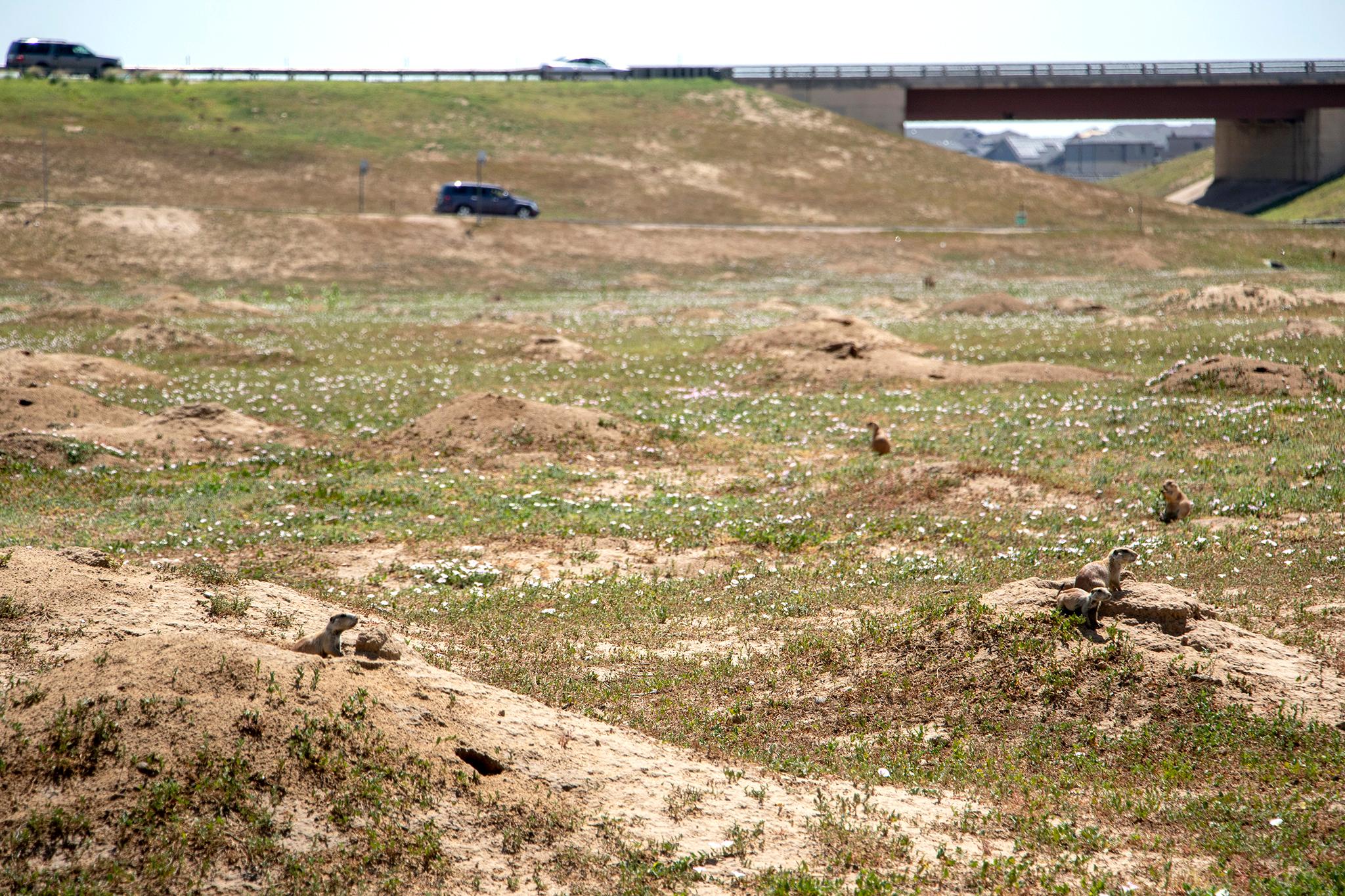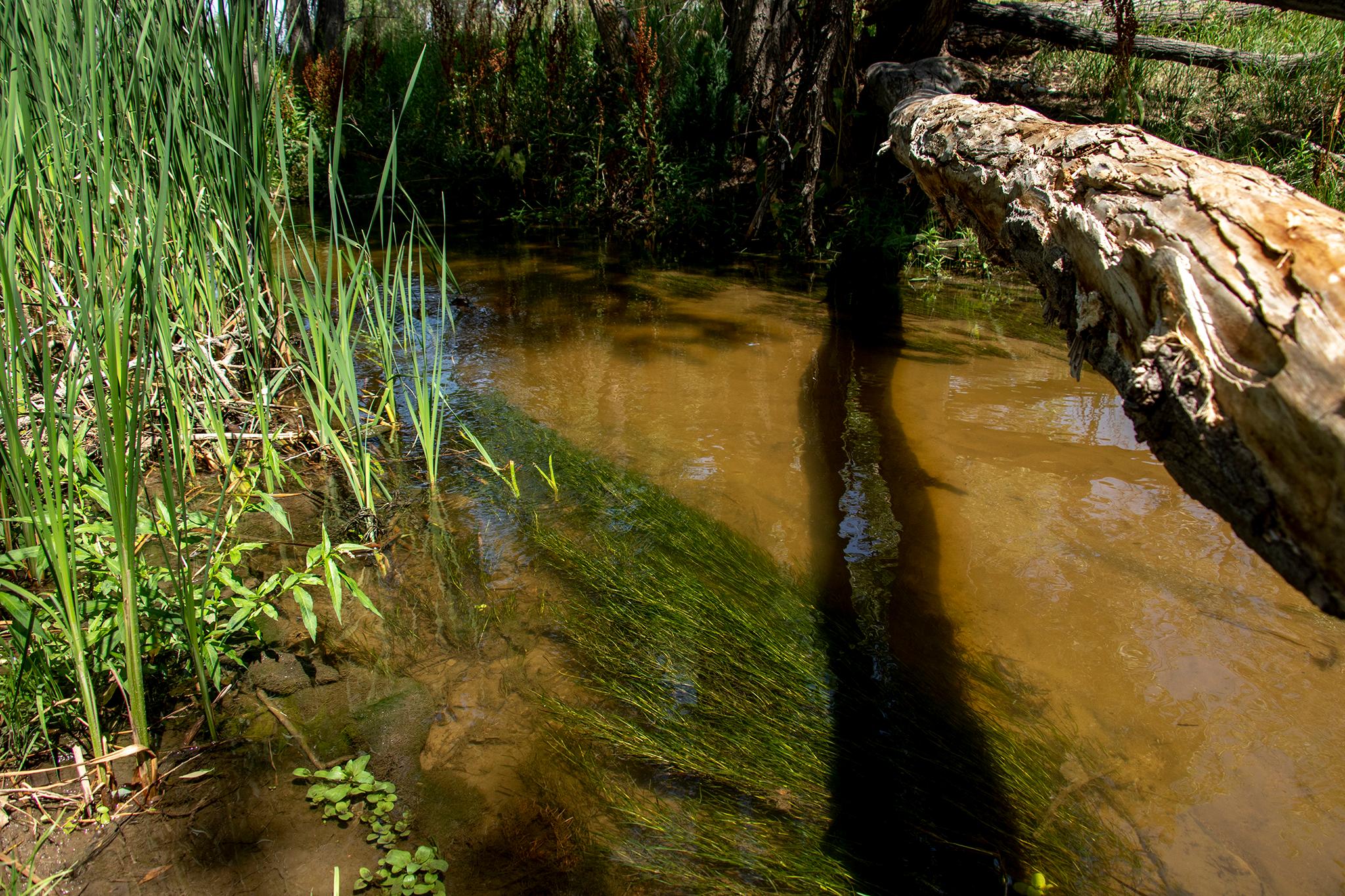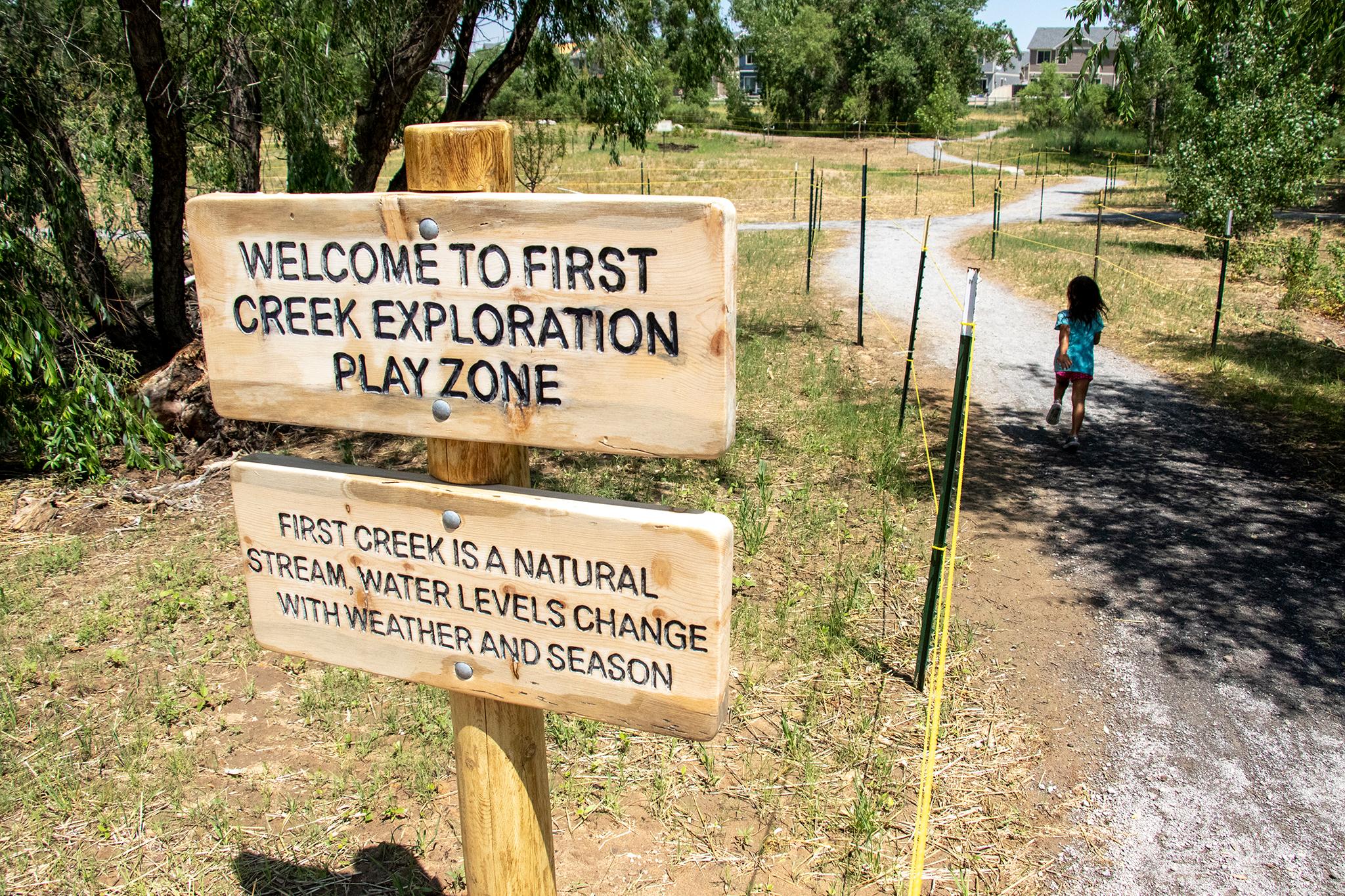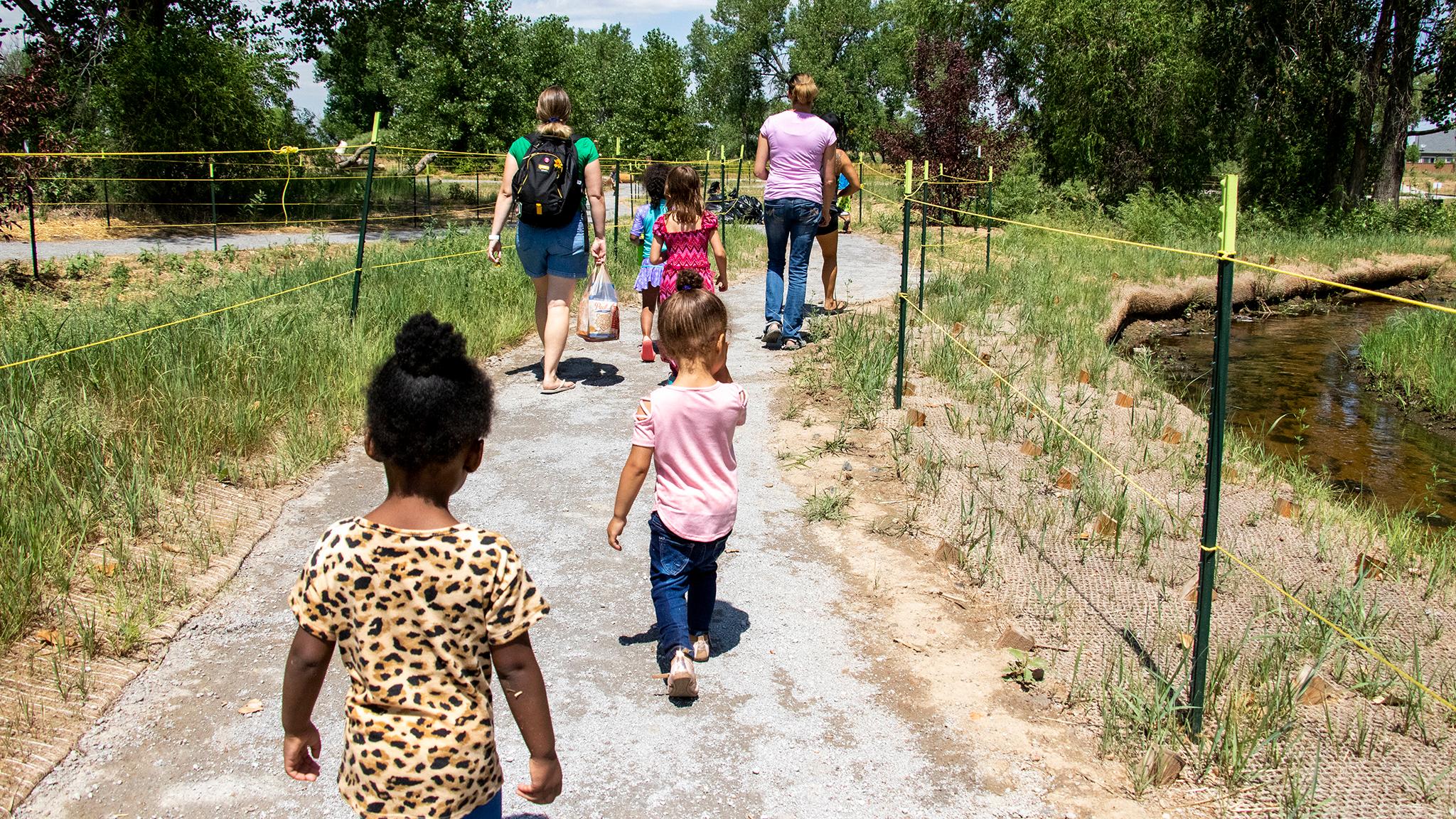Kids in Green Valley Ranch may see the Rocky Mountains daily in the distance, but experiencing them up close is not necessarily an option. Denver's first truly "nature play" park, which opened Wednesday, will give them a taste, sometimes literally, of the landscapes beyond the city.
The 12-acre First Creek Park at 56th Avenue and Tower Road opened with the cutting of a ribbon, which was probably the most unnatural thing on the site. Everything else on the playground -- the log swing, the climbing boulders -- comes directly from nature.
First Creek's main event, though, is not a prescriptive structure that tells kids how to play. The main event is the stream and the crawdads in it. The woods and plains where dragonflies and prairie dogs live. The rocks and the bugs under them. The trails and the tasty raspberry bushes alongside them.
Those treasures lie beyond the manicured stuff. They require exploration.
"The structures are for sort of luring the kids in, but when you get past those structures, the opportunities to play are really only limited by your imagination," said Gordon Robertson, director of park planning for Denver Parks and Recreation.
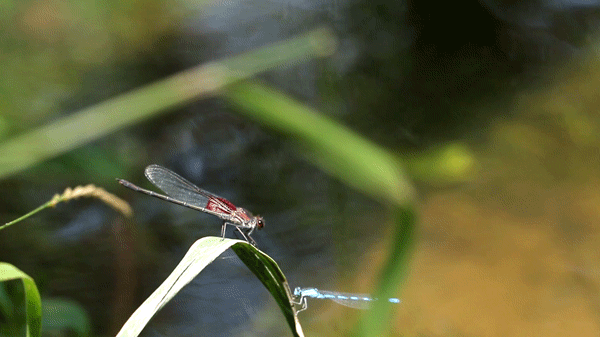
First Creek Park is Denver's first foray into a fully natural playground, the antidote for decades of prescriptive plastic forts and hot metal slides.
Those things have a time and a place but are no match for nature, Adam Bienenstock, a leading expert in nature play, said in an interview.
Kids will only slide down a slide so many times before getting bored, Bienenstock said. A biodiverse natural environment, on the other hand, is a choose-your-own-adventure situation. There's no predetermined outcome, no limit on the number of kids who can participate -- and that's good for the body and the brain, according to Bienaenstock's research.
"This is stuff that we now know but we didn't know before," Bienenstock said. "Kids need sensory engagement in these natural environments. Exercise is only one part of play. We have ignored imaginative play, the touch and feel of things, the sensory and cognitive experience, for 20 or 30 years."
Lucky for Green Valley Ranch, Bienenstock and his natural playground company consulted on First Creek Park.
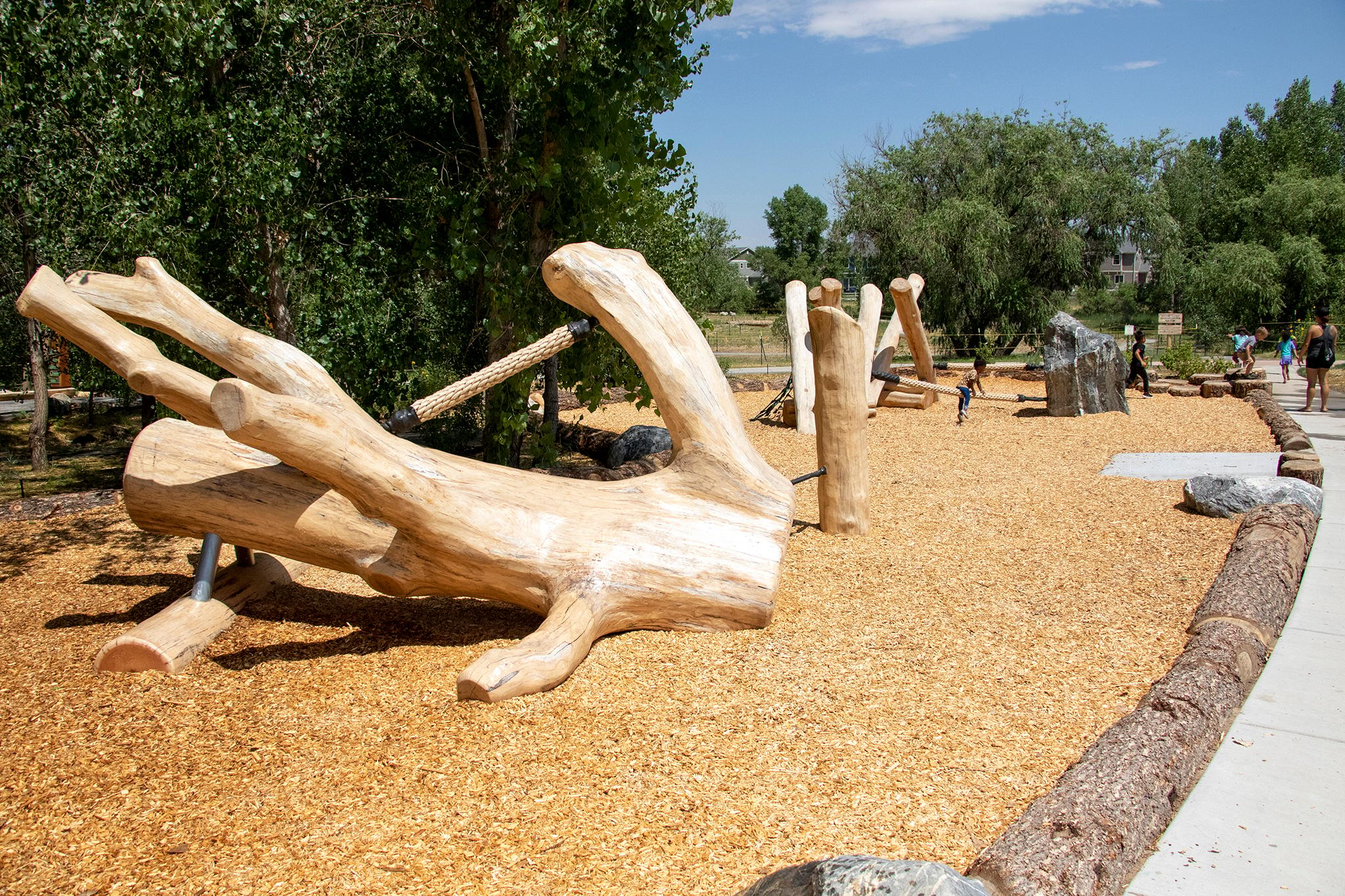
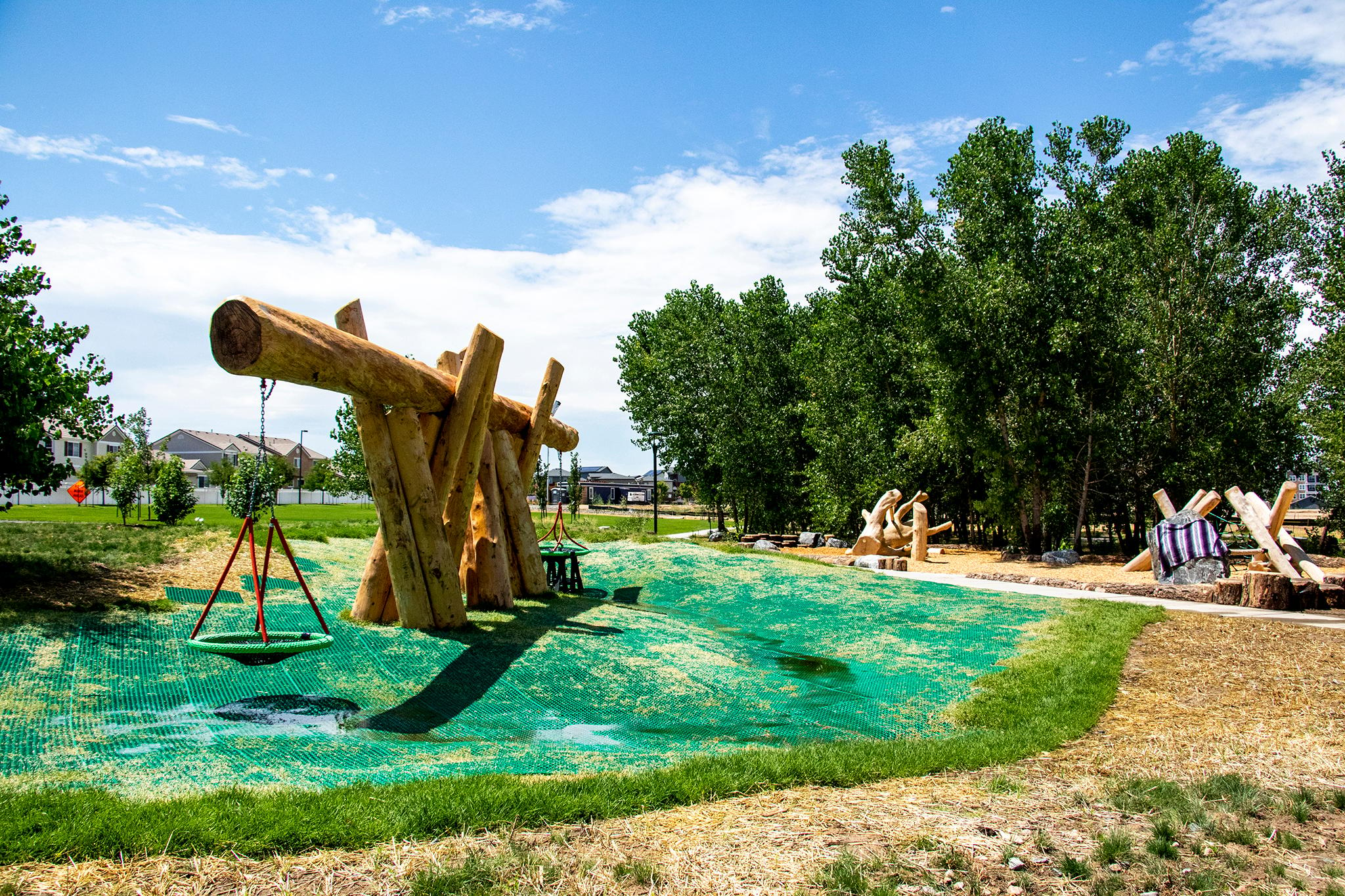
Researchers used to measure the average "roam rate" -- how far kids roam from their homes while playing -- in miles. Now it's measured in yards.
In England, the average roam rate has shrunk from 6 miles in 1920 to about 300 yards, according to research by Natural England and the Royal Society for the Protection of Birds. (No data exists for the United States.)
Development and migration to suburbs and cities means fewer kids live closer to nature now than in decades past. Plus, nature now competes with screen time, whether video games or smartphones, Bienenstock says.
Children's health bears the brunt of that trend, which has contributed to high obesity rates and even bullying behavior, according to research out of the University of Illinois.
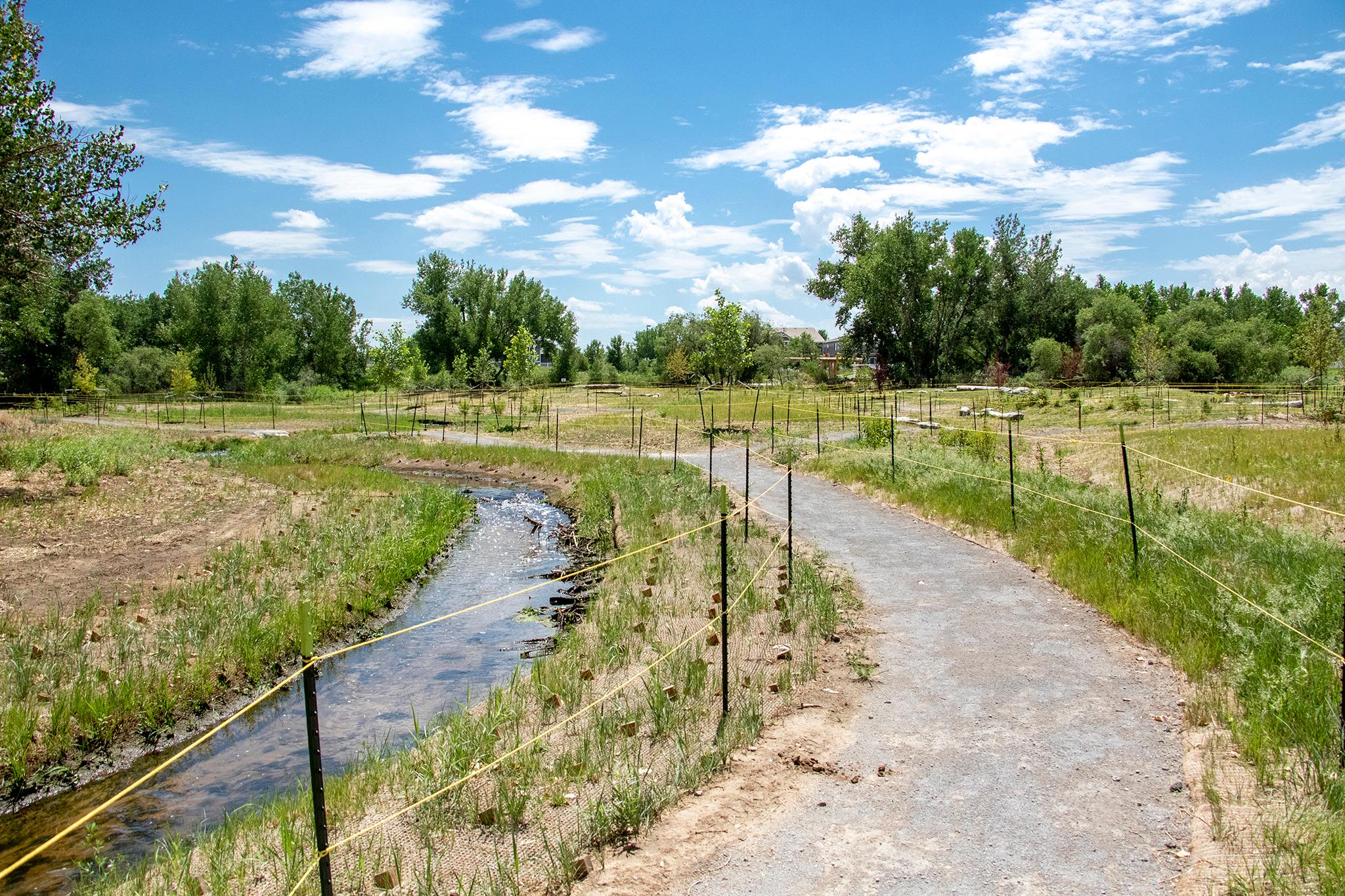
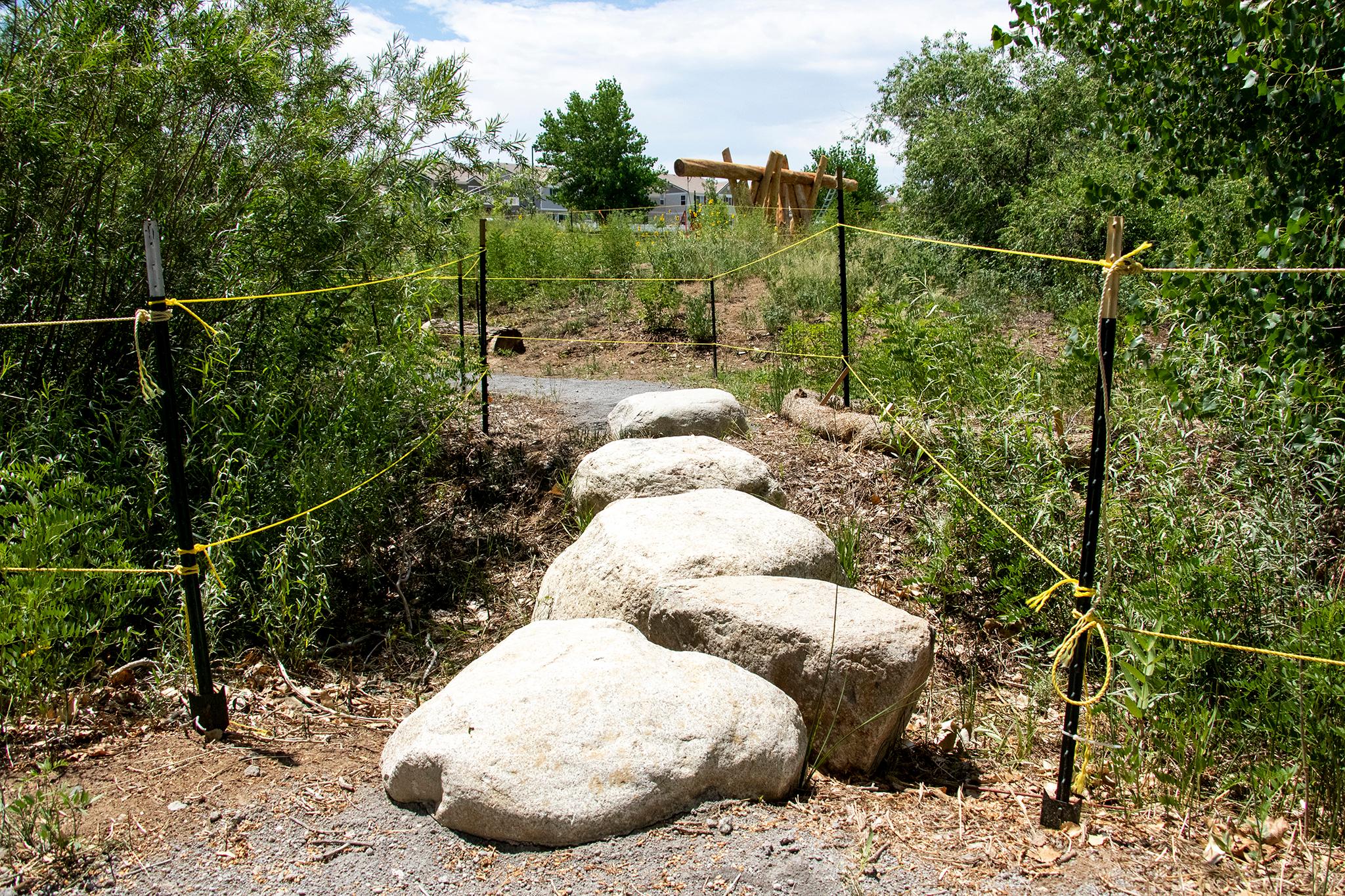
Kids today should probably experience nature if they're going to help save it tomorrow. But some city dwellers don't have access, either because they're not outdoorsy or can't afford to be.
Today's city dwellers will inherit the burden of climate change's effects on nature, according to Robertson and Bienenstock.
"Kids are growing up without that identification and connection to nature that they're gonna need to care about the environment to the degree that we really need them to," said Parks and Rec's Robertson.
It's not children's fault that nature in the city, or even the suburbs, can be scarce. Some families don't like the woods. Others have never really experienced them, either by choice or because they can't afford trips to the mountains and the expenses that accompany them: hiking gear, rafting lessons, fishing rods and down the line.
Building parks equitably is a stated tenet of Mayor Michael Hancock's administration. While his Parks and Rec department aims to give everyone a 10-minute walk to a park, officials want to prioritize areas of the city with lower incomes and higher obesity rates, which tend to be neighborhoods with a higher-than-average portion of people of color.
About 1,700 people -- 650 children -- live within a 10-minute walk of the new nature playground, and the majority of them are not white, according to Parks and Rec documents.
More than half of the households within a 10-minute walk of First Creek are considered high-income. About 9 percent are considered low-income, with middle-class households making up 36 percent.
"First Creek Park delivers on the community investments promise we made to residents in the Elevate Denver bond program, and improves quality-of-life in this growing neighborhood," Hancock said in a statement.
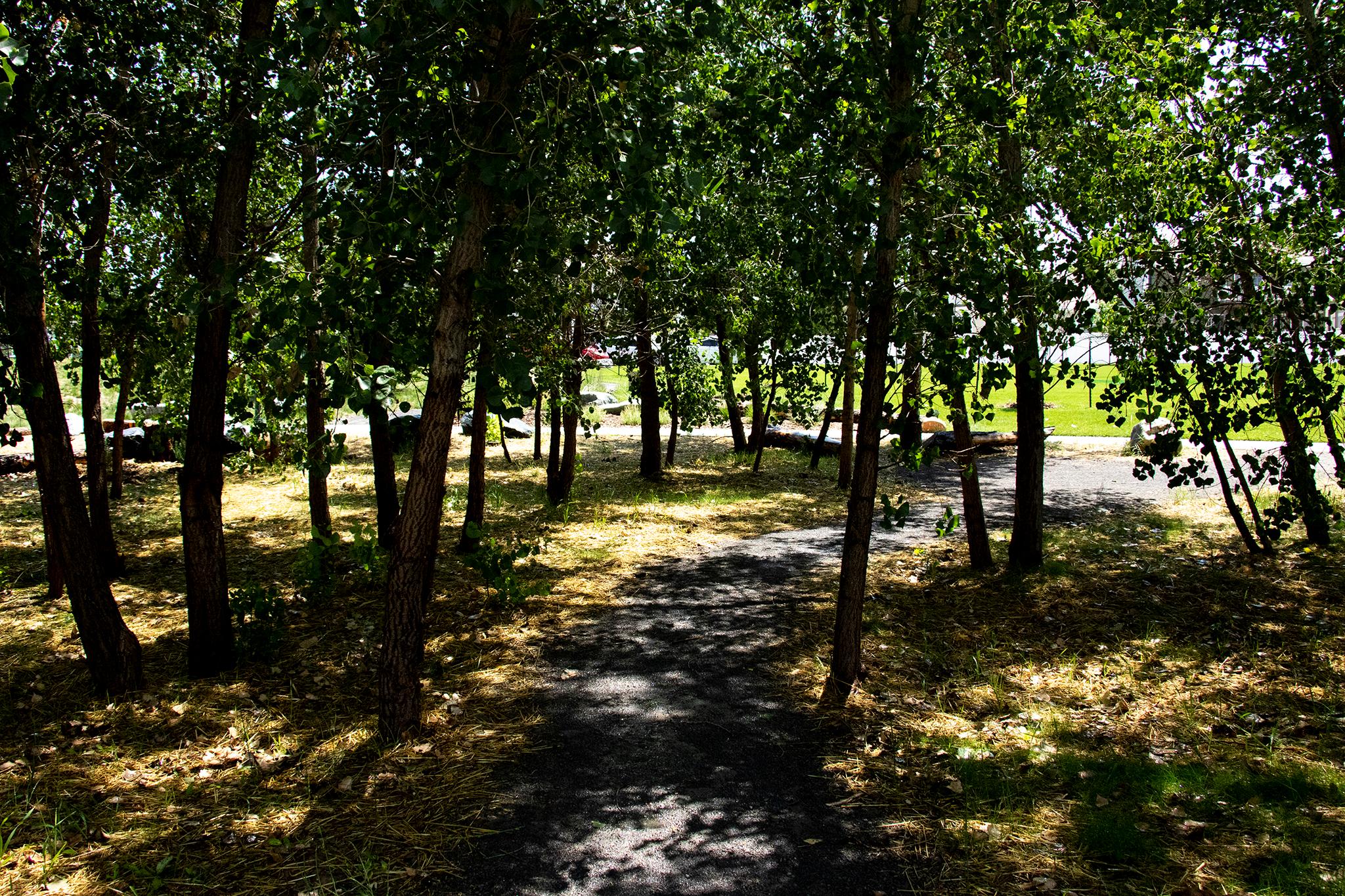
Despite a photo-op and ribbon cutting, the new park doesn't move the needle on Hancock's goal to have everyone live within a 10-minute (half-mile) walk of a park.
That's because First Creek was already a park, technically, though it was largely overgrown and inaccessible. Plus, Town Center Park is just a few blocks away.
Still, as the neighborhood continues to develop, more and more people will have access to both.
"If you're disconnected with the land, if you never experience it, you don't have a chance to love it or know it," Bienenstock said. "You know it, you love it and you protect it. If you miss the first three steps of that process, how can we expect that generation to care later?"
